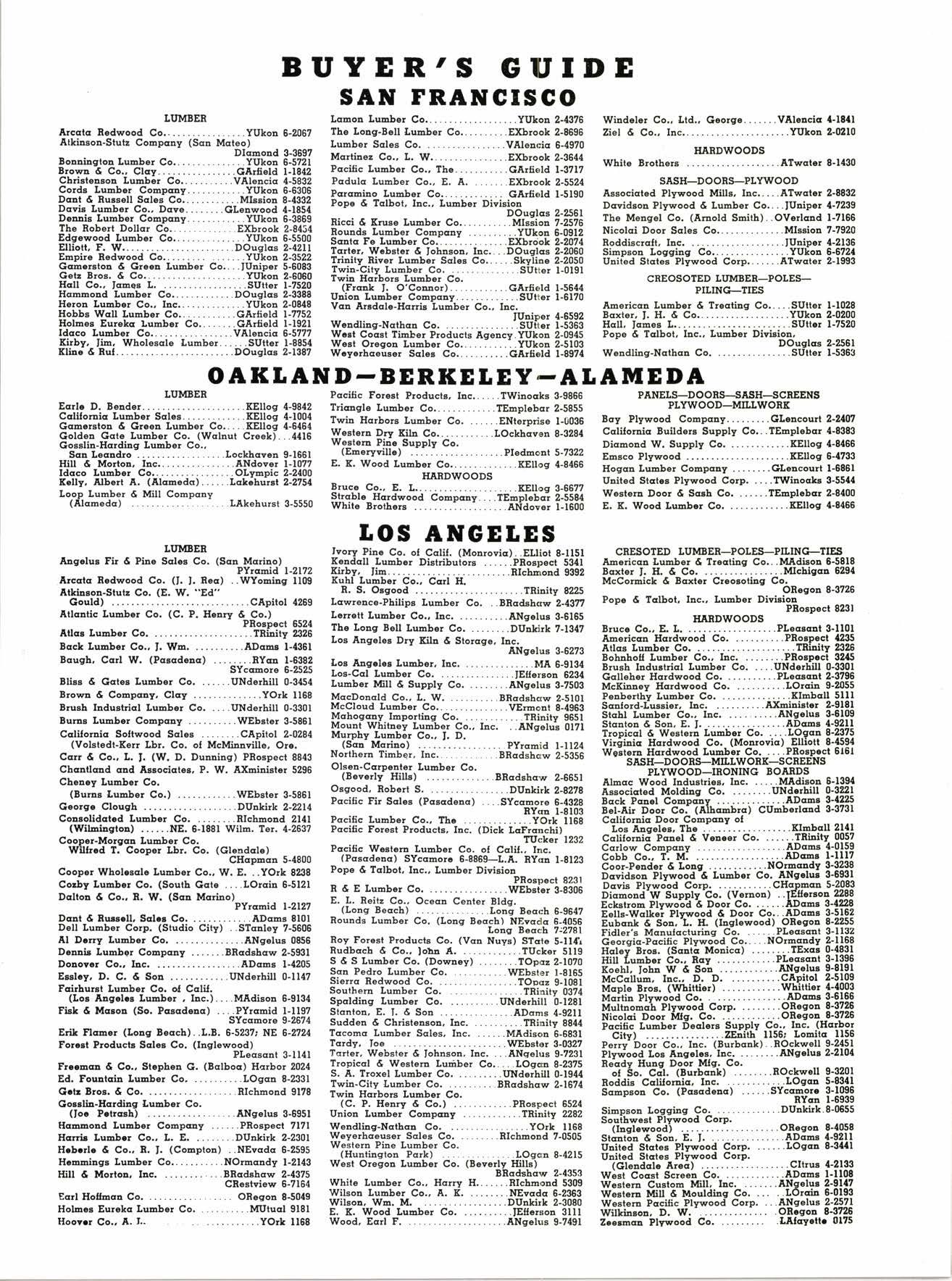
3 minute read
'52 \(/as Homebuilders Second Biggest Year
By Frank \il. Cortright, Executive Vice President National Association o[ Home Builders
NEW I'ilNS NSIJRED BY Ei-1 l!t{6-52
The home brrilding industry tn 1952 overcame high costs. excessive Government reguletions and an acute shortage of mortgage capital to roll up the second biggest production record in its history.
For the fourth straight year, construction of nerv housing ran above 1,00C,000 units, an achievement made all the more remarkable by the fact that use of materials s'as restricted through the first iralf of the year and that the Federal Reserve Board's Regulation X curbs on home credit were not suspended until mid-September.
The 1952 record spotlights the tremendous progress the industry has made since the close of \\rorld \\rar II tos'ard its goal of decent housing for all the American people. In the past six years, it has provided ner,r' housing for 7,000,000 families, r'l'ith :r resultant rise in the living standards of millions of others rvho were enabled to "move up" into quarters vacated by the new home buyers.
That six-year production feiLt rvas a major factor in averting the post-war business collapse predicted by many rvell known economists, including some in the Kremlin. The home building industry has played the same part in maintaining American prosperity a.fter World \\rar II, as did the automobile industry at the close of \\rorld \\'ar I.
When \\rorld War II ended. the United States faced an unprecedented housing shortage brought on by 16 years of depression anc[ rvar. I\{illion; of returning veterans rvere forming families and searching for homes of their ou.n, adding to the pressure for more housing.
American builders accepted that challenge. They l.ent into mass production in 1946 and turned out more than 670,000 nelr'' homes. They increased that volume in each subsequent year until they hit a record peak of 1,396,000 housing units in 1950, .lvhen Communist aggression in Korea again forced the nation to divert part of its resources to rearmament.
Although handcuffed Ly restrictions on housing materials. manpower and credit, the indu.;try combined practical ingenuity with scientific research in the difficult months after Korea to carry on its job of providing more and better housing for the American people. In 1951, almost 1,100,000 dwelling units lvere started, and this year's production ran slightly ahead of that rate.
The need for improverl materials and building techniques u'as emphasized as never before by the stringencies of that mobilization pe:iod. To meet lhat need, the NAHB expanded its techni,:al services to the industry last October rvith the creation of a "Home Builder's Research Institute." The Institute, bi. conducting practical field tests of its orvn, and coordinating the scattered rcsearch under rvay in universitv and industrial laboratorie:,, promises to give tremendous impetus to the deselopmenr of modern, mid-Z)th century housing b_v operative builders.
Rising costs s:ill are a major obstacle to the building industrv's eftort; to give the home bu1'er more housing for his monev Construction costs are at a record high level. more than half again as high as in 1946. and the trend is still ups'ard. although the ratc of climb has slorved sub.stantially in the p.est 12 months
The cost of building materials remained practicallv stationary throughout 1952. but construction $ages continued upn'ard, and thcre is nc clear-cut indication that the end is in sight. As measureC by the Boeckh index, the average cost of frame house construction for the country as a rvhole reached 251.5 per cent of the 1926-?9 average at the beginning of October, compared s'ith a l95l ar.erage of. 243.3 per cent.
The Boeckh index for frame construction costs stood at 161.8 in 1946. and climbed progressively, rvith one small interruption in !948, to its present peak.
Those cost increases h:.r'e beer: almost exactly duplicated in brick house construction, rvhere the Boeckh index rvorked dorvn from a 1916 level of 161.9 per cent to a high of 244.9 in October, 1952 based on a 19%-D index.
The inflationary pressures that have ballooned construction costs also have hit the monev market. making it increasinglv difficrrlt for home bul'ers to obtain adequate financing. Today. the scarcity of mortgage mone'v. particularly for GI housing, is the principal limiting factor in the home market, a r-ondition over'rvhich home builders have no control.
\\'hile conditions are not identical all over the countrv, most areas report great Cifficulty in obtaining private capital for investment in 4 per cent mortgages guaranteed by the (Continued on Page Z2')
Dependable Wholesale Distributors
PHONE,









